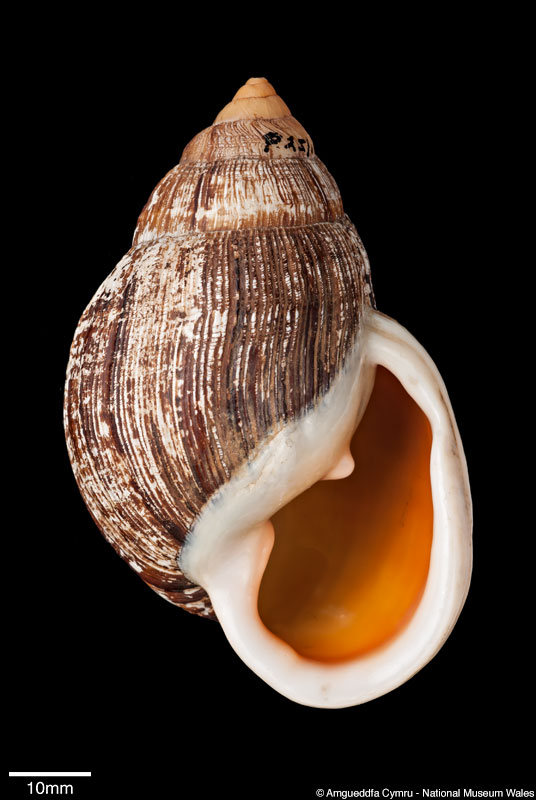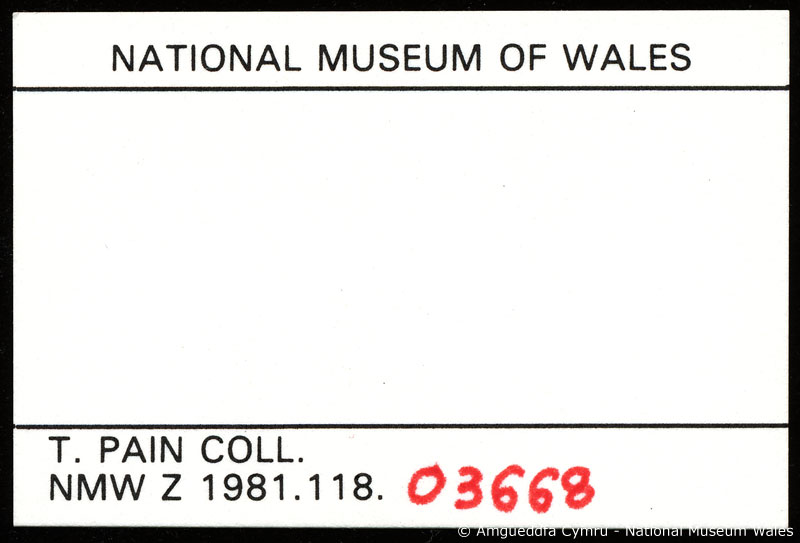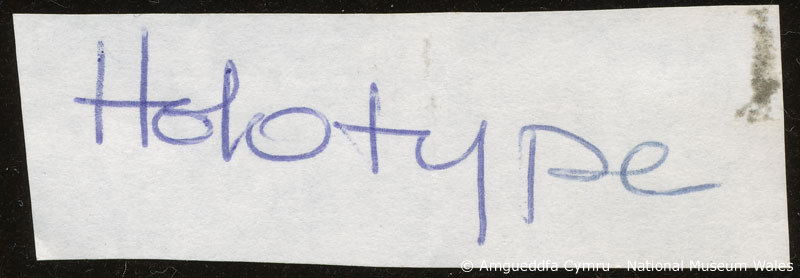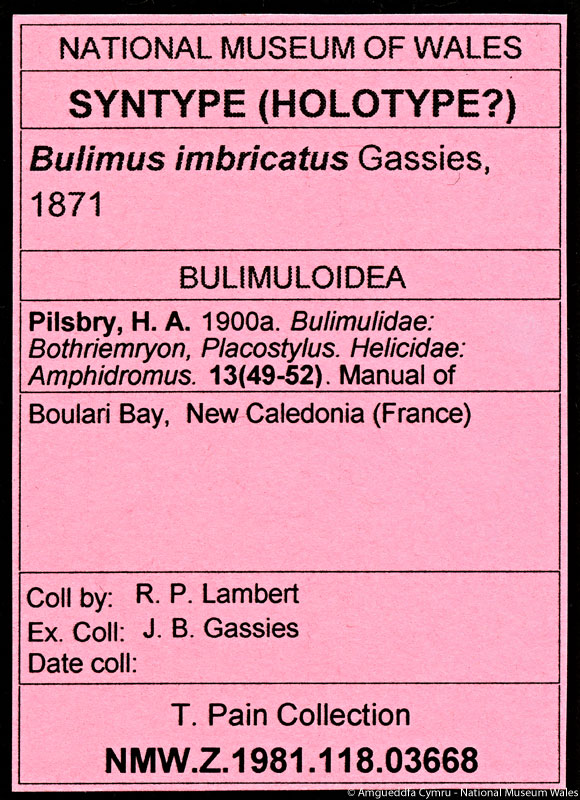 i16938 |
 i17079 |
 i17080 |
 i17081 |
 i17082 |
Bulimus imbricatus Gassies, 1871
Gastropoda : Bulimuloidea : Bulimulidae| Type Status: | Syntype (Holotype?) |
| Collection: | T. Pain |
| Accession No.: | NMW.Z.1981.118.03668 |
| Preparations: | Dry shell |
| No. of Specimens: | 1 sh |
| Locality: | Boulari Bay, New Caledonia (France) |
| Collecting Details: | R. P. Lambert, (ex.Coll.) J. B. Gassies |
References
Reference |
Citation |
Reference available |
|---|---|---|
| Gassies, J. B. 1871. Faune conchyliologique terrestre et fluvio-lacustre de la Nouvelle-Calédonie. 2. Paris. 1-212pp; pls 1-8 [187-188] | Cited Original Description Type Designation |
 request |
| Pilsbry, H. A. 1900a. Bulimulidae: Bothriemryon, Placostylus. Helicidae: Amphidromus. 13(49-52). Manual of Conchology, Structural and Systematic. With illustrations of the species. Founded by George W. Tryon, Jr. Academy of Natural Sciences. Philadelphia. Second Series: Pulmonata. 1-253pp; pls 1-72 [44; pl. 21, fig. 47] | Cited Figured |
 request |
Detailed Locality
| Verbatim Locality |
| Label: Boulari Bay, N. C. Gassies, 1871: Baie Boulari (Nouvelle-Calédonie) (R. P. Lambert) (Ma collection). (Vu 5 exemplaires). |
| Point Locality: | Boulari Bay, |
| Country: | New Caledonia (France) |
| Station: | |
| Grid ref./Coordinates: |
| Region: | |
| Sea Region: | |
| Altitude: | |
| Depth: |
| Expedition: | |
| Ex. Collection: | J. B. Gassies |
| Collecting date: | |
| Collected by: | R. P. Lambert |
Classification
Kingdom |
Phylum |
Class |
Order |
Superfamily |
Family |
|---|---|---|---|---|---|
| Animalia | Mollusca | Gastropoda
Subclass: Pulmonata |
- | Bulimuloidea | Bulimulidae |
Remarks
Tom Pain has labelled this lot as the holotype for Bulimus imbricatus Gassies, 1871. In the original description Gassies stated that he has viewed five examples of this species, which indicates syntype status, and does not appear to have figured it. In the Manual of Conchology, 13, p. 44 Pilsbry comments,” The specimen before me is more strongly decussated than the type figure shows.”, as Gassies did not figure this species I am assuming that he is referring to the specimen in his own publication as being ‘the’, or ‘a’, type (pl. 21, fig. 47). The NMW specimen does fit very well to the specimen illustrated by Pilsbry except it is more worn and more decussated. I would consider this specimen to be syntype rather than a holotype unless there is further information available.
